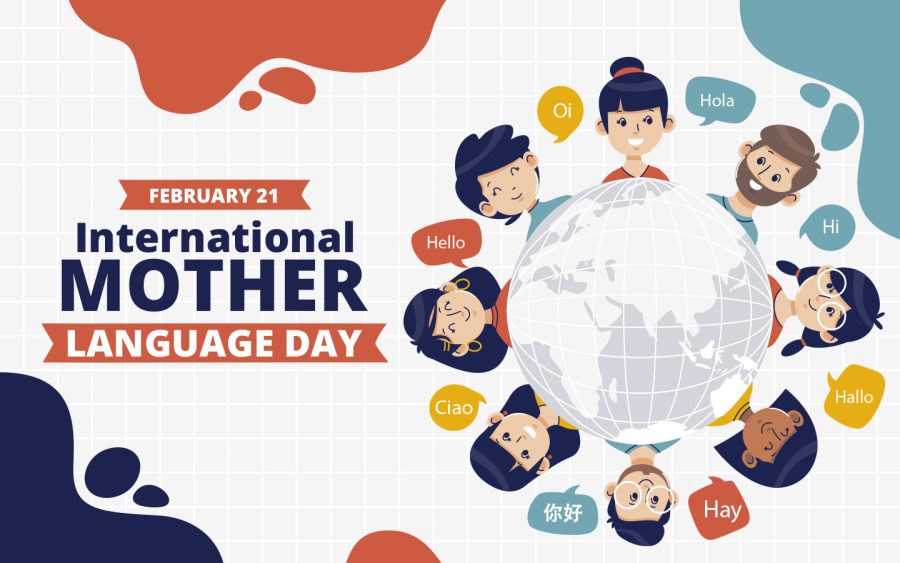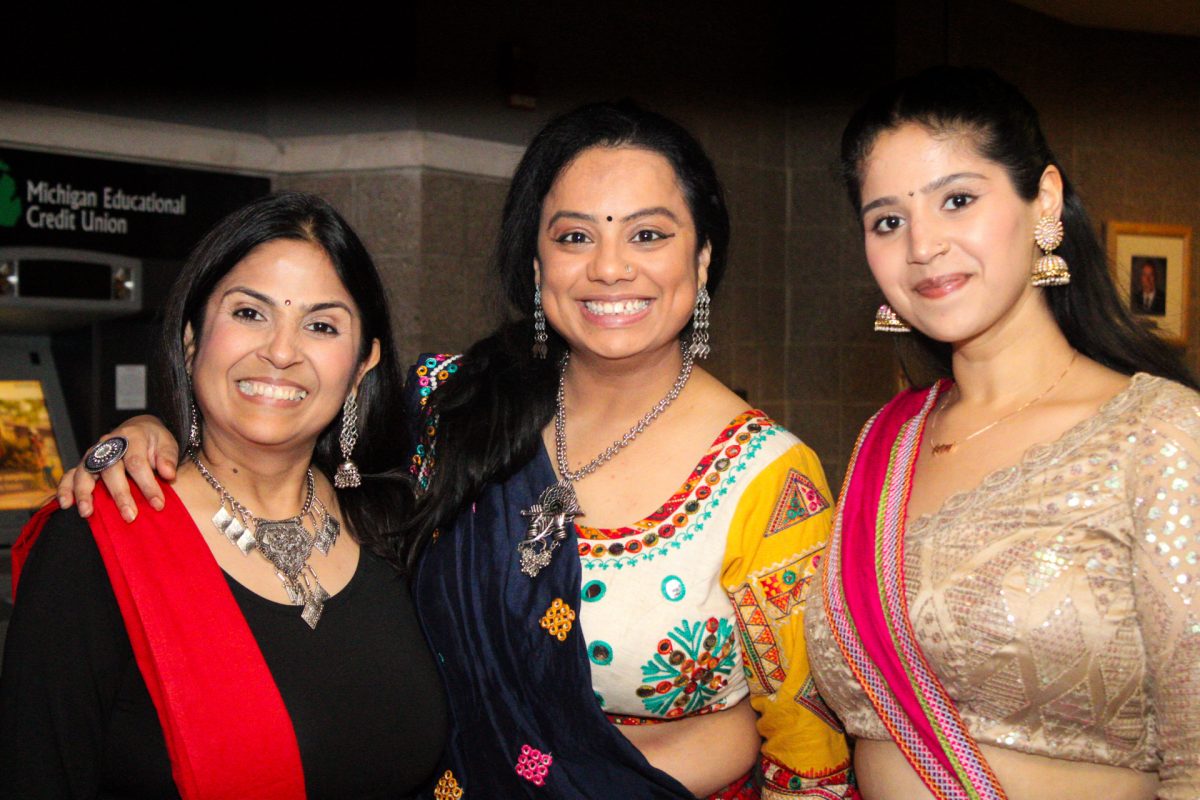Celebrating native languages
International Mother Language Day promotes cultural diversity
February 17, 2023
The United States holds the most immigrants in the world, and has about 328 ethnic languages. A large number of people in the country come from diverse backgrounds and English isn’t always the first language. In recognition of this Diversity, International Mother Language Day, which is on Feb. 21, celebrates indigenous Languages and Mother Tongues.
As an immigrant from Dhaka, Bangladesh which celebrates this international holiday, there is a big comparison as it is much less known in the USA. Yes, there is a day dedicated to anyone’s mother tongue recognized by UNESCO, and in a country of versatile cultures, races and languages this day could remind us, it’s a strength to know another language than English and it’s a pride to still be able to speak our mother tongue.
Mother Language is the speech a child learns from their mother; also known as mother tongue. However, the mother tongue does not always represent a person’s first language. Language is versatile and the same language can have different accents, speech, dialect, tonality etc. depending on different communities speaking the language. For example, people in Kolkata (a town in India) and people in Bangladesh speak Bangla, but their tone, speech and dialect are different. By the way they speak the language, one can distinguish where they are from. Another example would be the distinctive accent difference between Midwestern and Southern English Speakers in the USA. Mother Tongue exposes us to all the accents, speech, dialect and more that we do not get from formal institutions but from our mother. Maybe this is why it is called the mother tongue because most children learn their language first from their mother.
The history behind Mother Language Day is bittersweet for most Bengalis because of the inherited knowledge of its dark history. In regards to Mother Language Day’s history, it began when the Dominion of Pakistan was formed after the separation of the Indian subcontinent in 1947 when the British left. The country was composed of various ethnic and linguistic groups, with the geographically non-contiguous East Bengal province having a mainly Bengali population. In 1948, the Government of the Dominion of Pakistan ordained “Urdu” (mostly spoken in west Pakistan) as the sole national language, sparking extensive protests among the Bengali-speaking majority of East Bengal. Facing rising sectarian tensions and mass discontent with the new law, the government outlawed public meetings and rallies. The students of the University of Dhaka and other political activists defied the law and organized a protest on 21 February 1952. It was a nonviolent protest from the students however, the movement reached its climax when police killed student demonstrators on that day. Abdus Salam, Abul Barkat, Rafiq Uddin Ahmed, Abdul Jabbar, and Shafiur Rahman died, with hundreds of others injured. This was a rare incident in history, where people sacrificed their lives for their mother tongue. The deaths provoked widespread civil unrest. After years of conflict, the central government relented and granted official status to the Bengali language in 1956.
The Language Movement catalyzed the assertion of Bengali national identity in East Bengal and later East Pakistan, and became a forerunner to Bengali nationalist movements, including the 6-Point Movement and subsequently the Bangladesh Liberation War and the Bengali Language Implementation Act, 1987. In Bangladesh, Feb. 21 (Ekushey February) is observed as Language Movement Day, a national holiday.
To memorialize the movement and the martyrs, The Shaheed Minar monument was constructed near Dhaka Medical College. In 1999, UNESCO declared Feb. 21 as International Mother Language Day, in tribute to the Language Movement and the ethnolinguistic rights of people around the world. Today, the day is celebrated all over the world to appreciate the “Mother Language” and to raise awareness about indigenous languages that are fading away. It’s a bittersweet day for people in Independent Bangladesh because it is a celebration and a day of mourning.
In Dhaka, on Feb. 21, people from all classes of life wear Black and White and visit the Shahid Minar(The Martyr monument) with flowers. The whole month is also dedicated to a book fair named “AMAR EKUSHEY BOI MELA” (Eternal 21st Book Fair) to celebrate Bangla Language. This periodic ritual is participated by almost everyone in Bangladesh and the TV/media programs are dedicated to plays, drama, songs of the day. People from other cities have replicated the monument “Shahid Minar ” and if they can’t come to Dhaka, they visit their local Shahid Minar.
The monument Shahid Minar has been replicated all over the world as a land-based monument and it is arguably the most replicated land-based monument in the world. Shahid Minar has been replicated in the land of every city of Bangladesh, in some cities more than one replication, and there’s a Shahid Minar in New York, Canada, England, and numerous other cities. There is an ongoing fundraiser to build a Shahid Minar in Hamtramck, MI.
So why bother about International Mother Language day?
This is not the only time in history when college students rose their voices, sacrificed their lives for their rights, and brought revolution. History could have been written differently if a bunch of college students didn’t fight for their mother tongue and Bangla which is one the 7th most spoken language of the world could have faded away. We are losing ethnic languages every day. It is a day to remind ourselves of the importance of every language in this world. Only in the USA, we have the world’s most multilingual people and the day is there to appreciate the mother tongue and the beauty of diversity. Imagine how boring the world would be if we were to speak only one language. Colonization alone took away many of the world’s beautiful languages but when we lose a language, we also lose the distinctive nature, literature, and information stored within that language. This is why it is a beautiful reminder to be grateful for the mother tongue we have, practice it often, and protect it.








